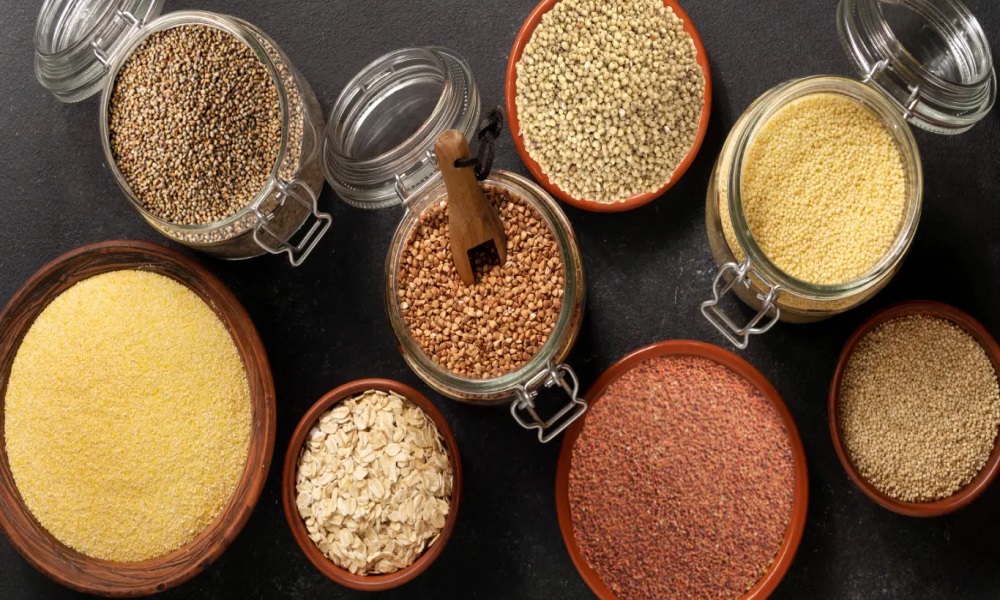Understanding Food Labels: What to Look for and What to Avoid

In today’s fast-paced world, where convenience often trumps careful consideration, food labels serve as crucial guides for making informed dietary choices. But with a plethora of information packed into small print, understanding food labels can be daunting. This guide aims to demystify food labels, helping you to know what to look for and what to avoid for a healthier lifestyle.
Why Food Labels Matter
Food labels are more than just a legal requirement; they are essential tools for consumers to make educated choices about what they eat. They provide information about the nutritional value, ingredients, allergens, and more, helping you manage dietary needs, avoid allergens, and reduce intake of unhealthy substances.
Breaking Down the Key Components of Food Labels
1. Serving Size
The serving size is the first thing you should check on a food label and also Firmafrokost. All the nutritional information provided is based on this amount. For instance, if the serving size is one cup and you consume two cups, you will need to double the nutritional values listed. Misunderstanding serving sizes can lead to overeating and underestimating calorie and nutrient intake.
2. Calories
Calories indicate the amount of energy you’ll get from one serving of the food. Monitoring calorie intake is essential for weight management. For most adults, a daily intake of 2000-2500 calories is recommended, but this varies based on factors like age, gender, and activity level.
3. Total Fat
Fat is essential for overall health, but not all fats are created equal. The total fat section on a label is usually broken down into:
- Saturated Fat: Often found in animal products, this type of fat can raise LDL (bad) cholesterol levels. It’s advisable to limit saturated fat intake.
- Trans Fat: Found in many processed foods, trans fat can increase the risk of heart disease and should be avoided as much as possible.
- Unsaturated Fat: These fats are healthier options and are often found in fish, nuts, and seeds. They can help improve cholesterol levels and lower the risk of heart disease.
4. Cholesterol
Cholesterol is another critical component to watch. High intake of dietary cholesterol can contribute to heart disease. It’s recommended to consume less than 300 mg of cholesterol per day.
5. Sodium
Sodium is a mineral that, in high amounts, can lead to high blood pressure and other cardiovascular issues. The daily recommended intake is less than 2300 mg, which is about one teaspoon of salt. Be cautious of packaged foods, as they often contain high sodium levels.
6. Total Carbohydrates
Carbohydrates are the body’s primary energy source, and the total carbohydrate section includes:
- Dietary Fiber: Essential for digestive health, fiber can also help control blood sugar levels and reduce cholesterol. A diet rich in fiber is linked to a lower risk of heart disease, diabetes, and certain cancers.
- Sugars: This includes both natural sugars and added sugars. Natural sugars are found in fruits and dairy, while added sugars are found in processed foods. Consuming too much added sugar can lead to weight gain, diabetes, and heart disease. The American Heart Association recommends limiting added sugar to 6 teaspoons (25 grams) per day for women and 9 teaspoons (38 grams) for men.
7. Protein
Protein is essential for muscle building, repair, and overall bodily function. The amount of protein you need varies depending on your age, sex, and activity level. The daily recommended intake is about 46 grams for women and 56 grams for men.
8. Vitamins and Minerals
Food labels also list important vitamins and minerals, such as Vitamin D, calcium, iron, and potassium. These nutrients are crucial for maintaining overall health, including bone strength, immune function, and blood pressure regulation.
What to Avoid on Food Labels
Knowing what to avoid on food labels is just as important as knowing what to look for. Here are some red flags:
1. Trans Fats
As mentioned earlier, trans fats are harmful and should be avoided. They can be listed as “partially hydrogenated oils” on the ingredient list. Even if a label claims “0 grams trans fat,” it can contain up to 0.5 grams per serving. It’s best to avoid any food that lists partially hydrogenated oils in the ingredients.
2. High Added Sugars
Watch out for added sugars, which go by many names including corn syrup, high-fructose corn syrup, cane sugar, agave nectar, and honey. Foods high in added sugars often contribute to empty calories without providing much nutritional value. Be especially wary of foods labeled “low-fat” or “fat-free,” as they often compensate for flavor loss with added sugars.
3. High Sodium Content
Foods that contain more than 20% of the daily value (DV) for sodium per serving are considered high in sodium. This can include canned soups, sauces, frozen meals, and snacks. Opt for “low-sodium” or “no-salt-added” versions when available.
4. Artificial Ingredients
Many processed foods contain artificial colors, flavors, and preservatives that offer no nutritional benefits and may have adverse health effects. Common additives to watch for include:
- Artificial Colors: Such as Red 40, Yellow 5, and Blue 1, which have been linked to behavioral problems in children.
- Artificial Sweeteners: Including aspartame, saccharin, and sucralose, which can be found in diet sodas, sugar-free snacks, and desserts. While they provide fewer calories, some studies suggest they may still contribute to weight gain and other health issues.
- Preservatives: Such as BHA, BHT, and sodium benzoate, which are used to extend shelf life but have been linked to cancer and other health problems in animal studies.
5. Misleading Health Claims
Food packaging often features bold claims like “all-natural,” “gluten-free,” “organic,” or “low-fat.” While these claims may sound healthy, they can be misleading. For instance:
- “All-Natural”: This doesn’t necessarily mean the product is healthy or free of artificial ingredients.
- “Gluten-Free”: Foods that are naturally gluten-free, like potato chips, may still be high in fat, sugar, or sodium.
- “Organic”: While organic foods are free of synthetic pesticides and fertilizers, they can still be high in calories, sugars, and fats.
- “Low-Fat” or “Fat-Free”: These products often have added sugars to enhance flavor, making them not necessarily healthier options.
How to Make Healthier Choices
Now that you know what to look for and what to avoid, here are some tips for making healthier choices:
1. Prioritize Whole Foods
Whole foods like fruits, vegetables, whole grains, and lean proteins are typically more nutritious than processed foods. They are naturally low in added sugars, sodium, and unhealthy fats.
2. Read the Ingredient List
Ingredients are listed in order of quantity, from highest to lowest. A long list of unrecognizable ingredients often indicates a highly processed food. Aim for products with fewer, recognizable ingredients.
3. Watch Portion Sizes
Even healthy foods can contribute to weight gain if consumed in large quantities. Pay attention to portion sizes and try to stick to recommended serving sizes.
4. Limit Processed Foods
Processed foods often contain unhealthy fats, added sugars, and high sodium levels. Opt for fresh or minimally processed foods whenever possible.
5. Stay Educated
Food manufacturers frequently change formulations, so regularly reading labels is essential. Stay informed about new food additives and ongoing nutritional research to make the best choices for your health.
Conclusion
Understanding food labels is a crucial skill in navigating today’s food landscape. By knowing what to look for and what to avoid, you can make informed choices that align with your health goals. Remember to prioritize whole foods, be mindful of serving sizes, and stay informed about what goes into your body. With these tools in hand, you’ll be better equipped to maintain a healthy and balanced die




